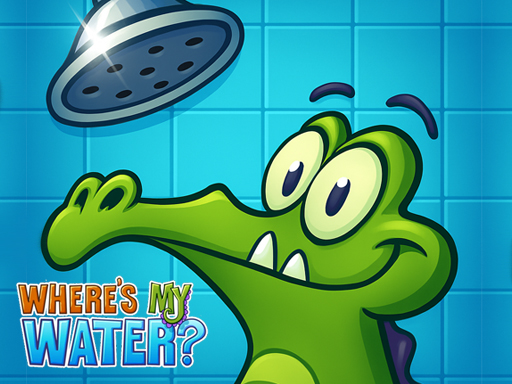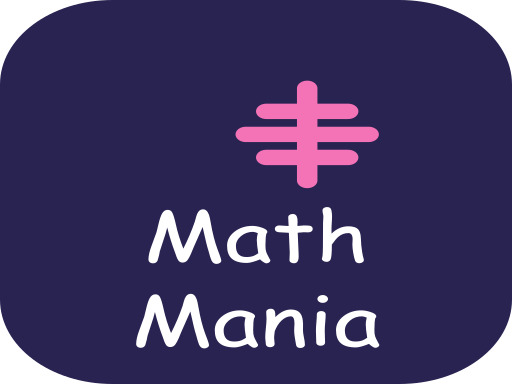Pastry Perfection Puzzle
About Pastry Perfection Puzzle
Okay, so you know how we’re always on the hunt for that perfect game, the one that just *clicks* with you, that you can lose hours in without even realizing it? The kind that scratches a specific itch you didn’t even know you had? Well, I think I’ve found it. Seriously, you have to hear about this. It’s called *Pastry Perfection Puzzle*, and honestly, I’m obsessed. I’m talking full-blown, "just one more level" addiction, but in the best possible way.
You know me, I’ve always been drawn to games that offer a blend of challenge and pure, unadulterated relaxation. I love the thrill of a complex strategy game, sure, but sometimes, after a long day, all I want is something that lets my brain unwind, something that feels like a warm hug for my grey matter. And that’s exactly what Pastry Perfection Puzzle delivers, but with so much more depth than you’d expect from something that, on the surface, looks so delightfully sweet.
When I first stumbled upon it, I admit, I was a little skeptical. Another puzzle game? Another match-three? I mean, we’ve seen a million of those, right? But there was something about the screenshots, the vibrant colors, the way the little cakes just *popped* on the screen, that pulled me in. It looked so inviting, so… cozy. And let me tell you, that initial impression was just the tip of the icing.
The moment you dive in, you’re greeted by this incredibly charming aesthetic. Imagine a world made entirely of the most delectable desserts you’ve ever seen. We’re talking fluffy cupcakes with swirls of frosting, glistening tarts piled high with berries, perfectly glazed donuts, delicate macarons in every pastel shade imaginable. The visuals are just so utterly *cute*, you can almost smell the sugar and vanilla wafting from your screen. It’s not just a backdrop; it feels like a fully realized, edible universe. And the sounds! Oh man, the sounds are just as satisfying. Little tinkles when you make a match, soft squishes as cakes shift, a gentle, almost meditative background score that just melts away any stress. It really is a treat for the senses, and that’s before you even get into the actual puzzle-solving.
Now, the core mechanic, at first glance, seems simple enough: you’ve got these shelves, like you’re looking into a baker’s display case, and they’re filled with all these different pastries. Your goal is to make matches of three or more identical cakes. But here’s where the "puzzle" part really kicks in, and where it distinguishes itself from every other match-three out there. You don’t just swap adjacent pieces. Oh no, that would be too easy. Instead, you *shift* entire rows or columns of cakes across the shelves.
Think of it like this: you pick up a whole stack of cakes, slide them across, and then drop them back down. It’s not about finding a single move; it’s about orchestrating a sequence of shifts that brings the right cakes together. This small but brilliant twist completely changes the dynamic. You’re not just reacting to what’s on the board; you’re actively manipulating the entire layout, planning several moves ahead. There’s a beautiful, almost tactile feel to it, even though you’re just tapping a screen. You can almost feel the weight of those virtual cakes as you slide them, anticipating the satisfying cascade that’s about to happen.
What I love about games like this is how they start simple, lulling you into a false sense of security, and then gradually introduce layers of complexity that keep your brain buzzing. In Pastry Perfection Puzzle, you start by just clearing the visible cakes. Easy peasy, right? But then, the game throws in the "hidden cakes." These are pieces that are obscured, maybe under a layer of crumbs, or peeking out from behind a decorative element. You have to clear the cakes around them to reveal what they are, and only then can you incorporate them into your matches. It adds this wonderful element of discovery, like you’re slowly unveiling a secret recipe.
And then, just when you think you’ve got a handle on that, it introduces "shadowed cakes." These are cakes that are still visible, but they’re dark, almost ghostly, and they can’t be moved directly. You have to make matches *next* to them, or even *over* them, to bring them back to life, to make them edible again. This is where the strategic thinking really ramps up. You’re not just looking for immediate matches; you’re thinking about how to clear a path, how to activate those shadowed pieces, how to set up a chain reaction that will hit multiple objectives at once. It’s like a delicious game of dominoes, where every move has consequences, and every successful chain feels like a tiny victory parade.
The real magic happens when a strategy finally clicks into place. You’ve been staring at a board, maybe for a minute or two, feeling a little stuck, a little frustrated. You’ve shifted a few rows back and forth, trying to visualize the possibilities. And then, suddenly, it hits you. That one perfect shift, that one crucial move that unlocks a cascade of matches, clearing a whole section of the board, revealing a hidden cake, and activating a shadowed one all in one glorious sequence. That feeling, that moment of "aha!", it’s genuinely exhilarating. It’s the kind of satisfaction that makes you lean forward in your chair, a little smile creeping onto your face, because you just outsmarted the puzzle.
Honestly, there’s something magical about how this game manages to be both incredibly relaxing and genuinely challenging at the same time. The pace is entirely up to you. There’s no ticking clock, no frantic rush. You can take all the time you need to analyze the board, to plan your moves. This makes it perfect for unwinding, for those moments when you just want to zone out and let your mind focus on something pleasant and engaging. But don’t mistake that for easy. The later levels, especially when you’re dealing with complex arrangements of hidden and shadowed cakes, really make you think. You’ll find yourself replaying levels, not out of frustration, but out of a genuine desire to master the puzzle, to find that elegant solution you know is there.
I mean, the level design is just brilliant. Each new puzzle feels fresh, even though the core mechanics remain the same. They introduce new obstacles, new board layouts, new combinations of hidden and shadowed elements that constantly keep you on your toes. One level might be about clearing a path to a single, crucial cake, while another might be about creating a massive chain reaction across a sprawling board. The variety is fantastic, and it keeps that sense of discovery alive, even dozens of hours in.
In my experience, the best moments come when you’re so absorbed that you completely lose track of time. You start a level, thinking you’ll just play for a few minutes, and the next thing you know, the sun has set, and you’ve cleared five more boards. It’s that flow state, you know? Where your brain is engaged, but not stressed, just humming along, connecting patterns, predicting outcomes. Pastry Perfection Puzzle excels at creating that exact feeling. It’s like a delicious meditation.
What’s fascinating is how the game manages to maintain its charm even when the puzzles get tough. The cute visuals and the soothing sounds never make it feel punishing. Even when I’m stumped, I’m still enjoying the process, still appreciating the art, still hearing those delightful little sound effects. It’s a testament to really thoughtful game design, where every element works together to create a cohesive and enjoyable experience.
You can almost feel the tension in your shoulders during those intense moments where you’re trying to figure out the perfect sequence of shifts to clear a particularly stubborn section, and then that incredible release of satisfaction when you nail it. It's not the adrenaline rush of a racing game, but it's a different kind of thrill – the intellectual satisfaction of a problem elegantly solved.
This makes me wonder, how do they keep coming up with so many clever ways to arrange these cakes? It’s not just random generation; you can tell there’s a handcrafted quality to each puzzle. The developers clearly put a lot of love into making sure each challenge feels unique and rewarding. The real magic happens when you start to internalize the mechanics, when you can look at a board and almost instinctively see the optimal sequence of shifts. It’s like learning a new language, or mastering a musical instrument – that feeling of competence building up over time is incredibly rewarding.
Honestly, if you’re looking for a game that’s going to make you smile, challenge your brain in a gentle but engaging way, and just generally make your day a little sweeter, you absolutely have to check out Pastry Perfection Puzzle. It’s more than just a puzzle game; it’s a little slice of joy, a digital confection that you can savor at your own pace. Trust me on this one. You won't regret diving into this delicious, brain-teasing world. Just try not to play it on an empty stomach, because those cakes look *really* good.
You know me, I’ve always been drawn to games that offer a blend of challenge and pure, unadulterated relaxation. I love the thrill of a complex strategy game, sure, but sometimes, after a long day, all I want is something that lets my brain unwind, something that feels like a warm hug for my grey matter. And that’s exactly what Pastry Perfection Puzzle delivers, but with so much more depth than you’d expect from something that, on the surface, looks so delightfully sweet.
When I first stumbled upon it, I admit, I was a little skeptical. Another puzzle game? Another match-three? I mean, we’ve seen a million of those, right? But there was something about the screenshots, the vibrant colors, the way the little cakes just *popped* on the screen, that pulled me in. It looked so inviting, so… cozy. And let me tell you, that initial impression was just the tip of the icing.
The moment you dive in, you’re greeted by this incredibly charming aesthetic. Imagine a world made entirely of the most delectable desserts you’ve ever seen. We’re talking fluffy cupcakes with swirls of frosting, glistening tarts piled high with berries, perfectly glazed donuts, delicate macarons in every pastel shade imaginable. The visuals are just so utterly *cute*, you can almost smell the sugar and vanilla wafting from your screen. It’s not just a backdrop; it feels like a fully realized, edible universe. And the sounds! Oh man, the sounds are just as satisfying. Little tinkles when you make a match, soft squishes as cakes shift, a gentle, almost meditative background score that just melts away any stress. It really is a treat for the senses, and that’s before you even get into the actual puzzle-solving.
Now, the core mechanic, at first glance, seems simple enough: you’ve got these shelves, like you’re looking into a baker’s display case, and they’re filled with all these different pastries. Your goal is to make matches of three or more identical cakes. But here’s where the "puzzle" part really kicks in, and where it distinguishes itself from every other match-three out there. You don’t just swap adjacent pieces. Oh no, that would be too easy. Instead, you *shift* entire rows or columns of cakes across the shelves.
Think of it like this: you pick up a whole stack of cakes, slide them across, and then drop them back down. It’s not about finding a single move; it’s about orchestrating a sequence of shifts that brings the right cakes together. This small but brilliant twist completely changes the dynamic. You’re not just reacting to what’s on the board; you’re actively manipulating the entire layout, planning several moves ahead. There’s a beautiful, almost tactile feel to it, even though you’re just tapping a screen. You can almost feel the weight of those virtual cakes as you slide them, anticipating the satisfying cascade that’s about to happen.
What I love about games like this is how they start simple, lulling you into a false sense of security, and then gradually introduce layers of complexity that keep your brain buzzing. In Pastry Perfection Puzzle, you start by just clearing the visible cakes. Easy peasy, right? But then, the game throws in the "hidden cakes." These are pieces that are obscured, maybe under a layer of crumbs, or peeking out from behind a decorative element. You have to clear the cakes around them to reveal what they are, and only then can you incorporate them into your matches. It adds this wonderful element of discovery, like you’re slowly unveiling a secret recipe.
And then, just when you think you’ve got a handle on that, it introduces "shadowed cakes." These are cakes that are still visible, but they’re dark, almost ghostly, and they can’t be moved directly. You have to make matches *next* to them, or even *over* them, to bring them back to life, to make them edible again. This is where the strategic thinking really ramps up. You’re not just looking for immediate matches; you’re thinking about how to clear a path, how to activate those shadowed pieces, how to set up a chain reaction that will hit multiple objectives at once. It’s like a delicious game of dominoes, where every move has consequences, and every successful chain feels like a tiny victory parade.
The real magic happens when a strategy finally clicks into place. You’ve been staring at a board, maybe for a minute or two, feeling a little stuck, a little frustrated. You’ve shifted a few rows back and forth, trying to visualize the possibilities. And then, suddenly, it hits you. That one perfect shift, that one crucial move that unlocks a cascade of matches, clearing a whole section of the board, revealing a hidden cake, and activating a shadowed one all in one glorious sequence. That feeling, that moment of "aha!", it’s genuinely exhilarating. It’s the kind of satisfaction that makes you lean forward in your chair, a little smile creeping onto your face, because you just outsmarted the puzzle.
Honestly, there’s something magical about how this game manages to be both incredibly relaxing and genuinely challenging at the same time. The pace is entirely up to you. There’s no ticking clock, no frantic rush. You can take all the time you need to analyze the board, to plan your moves. This makes it perfect for unwinding, for those moments when you just want to zone out and let your mind focus on something pleasant and engaging. But don’t mistake that for easy. The later levels, especially when you’re dealing with complex arrangements of hidden and shadowed cakes, really make you think. You’ll find yourself replaying levels, not out of frustration, but out of a genuine desire to master the puzzle, to find that elegant solution you know is there.
I mean, the level design is just brilliant. Each new puzzle feels fresh, even though the core mechanics remain the same. They introduce new obstacles, new board layouts, new combinations of hidden and shadowed elements that constantly keep you on your toes. One level might be about clearing a path to a single, crucial cake, while another might be about creating a massive chain reaction across a sprawling board. The variety is fantastic, and it keeps that sense of discovery alive, even dozens of hours in.
In my experience, the best moments come when you’re so absorbed that you completely lose track of time. You start a level, thinking you’ll just play for a few minutes, and the next thing you know, the sun has set, and you’ve cleared five more boards. It’s that flow state, you know? Where your brain is engaged, but not stressed, just humming along, connecting patterns, predicting outcomes. Pastry Perfection Puzzle excels at creating that exact feeling. It’s like a delicious meditation.
What’s fascinating is how the game manages to maintain its charm even when the puzzles get tough. The cute visuals and the soothing sounds never make it feel punishing. Even when I’m stumped, I’m still enjoying the process, still appreciating the art, still hearing those delightful little sound effects. It’s a testament to really thoughtful game design, where every element works together to create a cohesive and enjoyable experience.
You can almost feel the tension in your shoulders during those intense moments where you’re trying to figure out the perfect sequence of shifts to clear a particularly stubborn section, and then that incredible release of satisfaction when you nail it. It's not the adrenaline rush of a racing game, but it's a different kind of thrill – the intellectual satisfaction of a problem elegantly solved.
This makes me wonder, how do they keep coming up with so many clever ways to arrange these cakes? It’s not just random generation; you can tell there’s a handcrafted quality to each puzzle. The developers clearly put a lot of love into making sure each challenge feels unique and rewarding. The real magic happens when you start to internalize the mechanics, when you can look at a board and almost instinctively see the optimal sequence of shifts. It’s like learning a new language, or mastering a musical instrument – that feeling of competence building up over time is incredibly rewarding.
Honestly, if you’re looking for a game that’s going to make you smile, challenge your brain in a gentle but engaging way, and just generally make your day a little sweeter, you absolutely have to check out Pastry Perfection Puzzle. It’s more than just a puzzle game; it’s a little slice of joy, a digital confection that you can savor at your own pace. Trust me on this one. You won't regret diving into this delicious, brain-teasing world. Just try not to play it on an empty stomach, because those cakes look *really* good.
Enjoy playing Pastry Perfection Puzzle online for free on Midiablog games. This Puzzle game offers amazing gameplay and stunning graphics. No downloads required, play directly in your browser!
How to Play
Use a mouse or touchpad to shift the cakes across the shelves Uncover hidden and shadowed cakes to complete each level and move on to the next sweet puzzle





Comments
This game is awesome! I love the graphics and gameplay.
One of the best games I've played recently. Highly recommended!